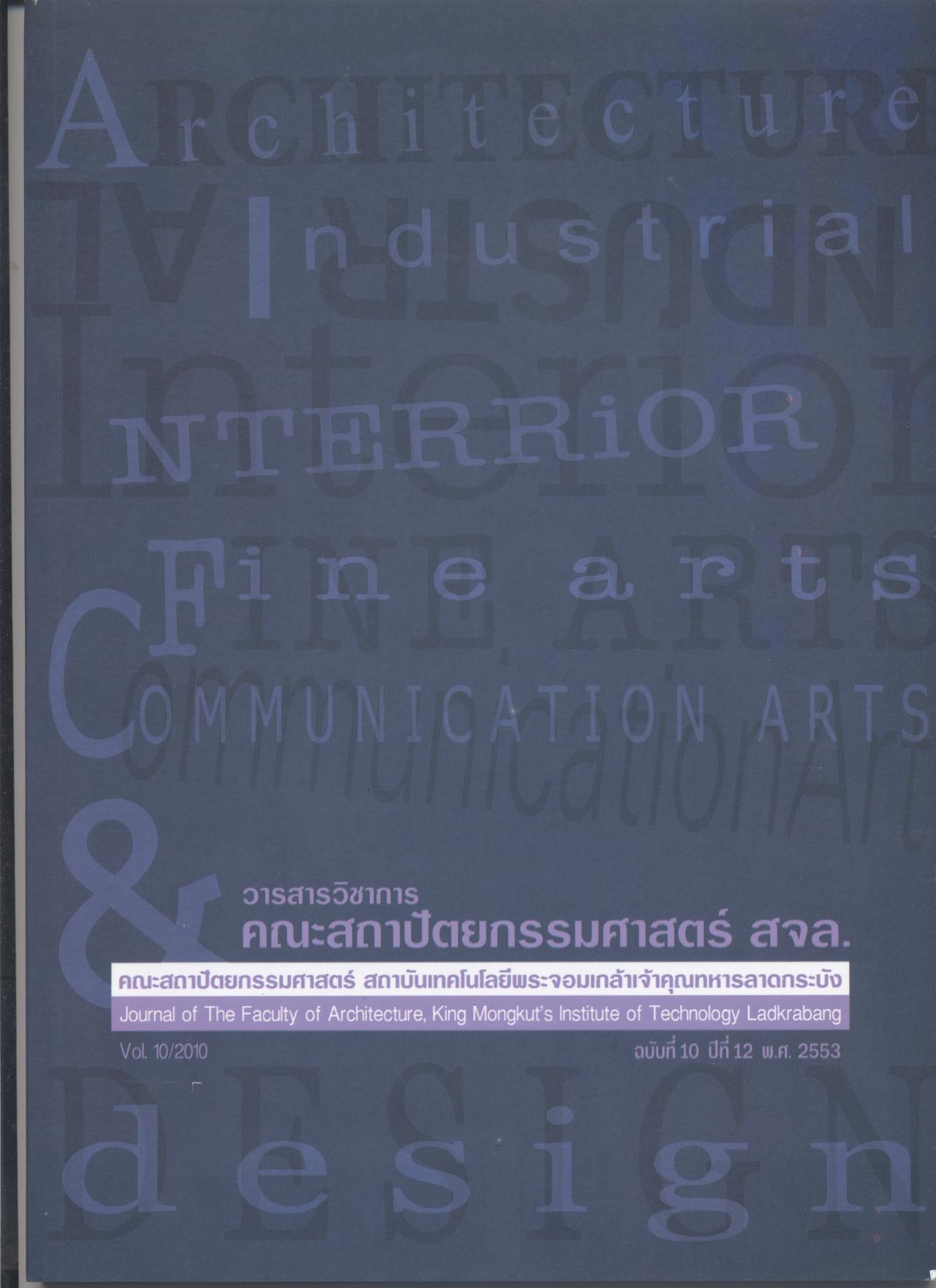มิติการใช้พื้นที่ว่างสาธารณะของเมือง กรณีศึกษาพื้นที่นันทนาการของเมืองนครนายก
Main Article Content
Abstract
บทคัดย่อ
มิติการใช้พื้นที่ว่างสาธารณะของเมืองเป็นการศึกษารูปแบบการใช้พื้นที่ว่างสาธารณะและวิเคราะห์ความสัมพันธ์ระหว่างรูปแบบนั้นๆ กับลักษณะทางสัณฐาน เศรษฐกิจและสังคมของเมือง อ้างอิงกับแนวความคิดที่ว่า พื้นที่ว่างสาธารณะที่มีคุณภาพและประสบความสำเร็จเป็นพื้นที่ที่มีความเป็นอเนกประโยชน์ (Multi-uses) ซึ่งเป็นผลมาจาก (1) ปัจจัยแวดล้อม พิจารณาจากตำแหน่งที่ตั้งของพื้นที่ว่าง ศักยภาพในการเข้าถึงที่วิเคราะห์ด้วยชุดทฤษฎีและเทคนิค Space Syntax, ย่านการใช้ประโยชน์ที่ดินโดยรอบ, ลักษณะมวลอาคารและพื้นที่ว่าง, รูปแบบวิถีชีวิต วัฒนธรรม, โครงสร้างประชากร, โครงสร้างและบทบาททางเศรษฐกิจ (2) ปัจจัยระดับพื้นที่ที่เกิดจากการออกแบบและการบริหารจัดการ จากกรณีศึกษาพื้นที่นันทนาการของเมืองนครนายก ผู้คนจะเลือกใช้พื้นที่ที่มีปัจจัยดีกว่า และการใช้พื้นที่จะมีประสิทธิภาพเมื่อมีปัจจัยแวดล้อมและปัจจัยระดับพื้นที่ที่เหมาะสมกับกิจกรรม
คำสำคัญ : มิติการใช้พื้นที่ว่างสาธารณะ, รูปแบบการใช้พื้นที่, พื้นที่สถานการณ์นิยม, ความเป็นอเนกประโยชน์
Abstract
Dimensions of urban public open space utilization, the study deal with open space utility format and analysis the correlation between each format and morphology, economic and social condition of Nakhon Nayok town. The studying referred to the hypothesis that the quality of a public open space depend on the multi – uses that come from two factors the environmental factors and the local modification factors. The environmental factors are location, accessibility potential (Space – Syntax Analysis), surrounding land utilization, building morphology, space and road block proportion. For the local modification factors are space design and construction, space administration and management. The studying of recreational activities found that the people favor the public space which has better both environmental and modification factors.
Keyword : dimensions of urban public open space uses, space uses pattern, situation’s space, multi-use
Article Details
This work is licensed under a Creative Commons Attribution-NonCommercial-ShareAlike 4.0 International License.
Copyright Transfer Statement
The copyright of this article is transferred to Journal of The Faculty of Architecture King Mongkut's Institute of Technology Ladkrabang with effect if and when the article is accepted for publication. The copyright transfer covers the exclusive right to reproduce and distribute the article, including reprints, translations, photographic reproductions, electronic form (offline, online) or any other reproductions of similar nature.
The author warrants that this contribution is original and that he/she has full power to make this grant. The author signs for and accepts responsibility for releasing this material on behalf of any and all co-authors.

